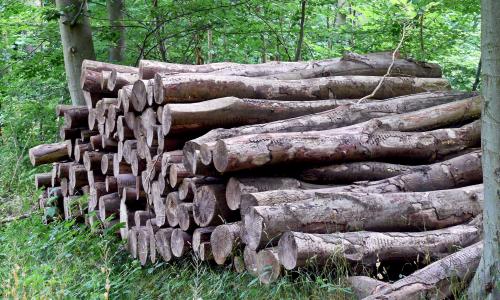
Places to Watch Fourth Edition: Five Indicated Illegal Logging Area in Indonesia
This fourth part features the top 5 Places to Watch for indications of illegal logging between 1 October to 31 December 2018.
#1 Indications of Illegal Logging in a 117-Ha Area for the Utilization of Wood within a Limited Production Forest Area, Kampar Regency, Riau
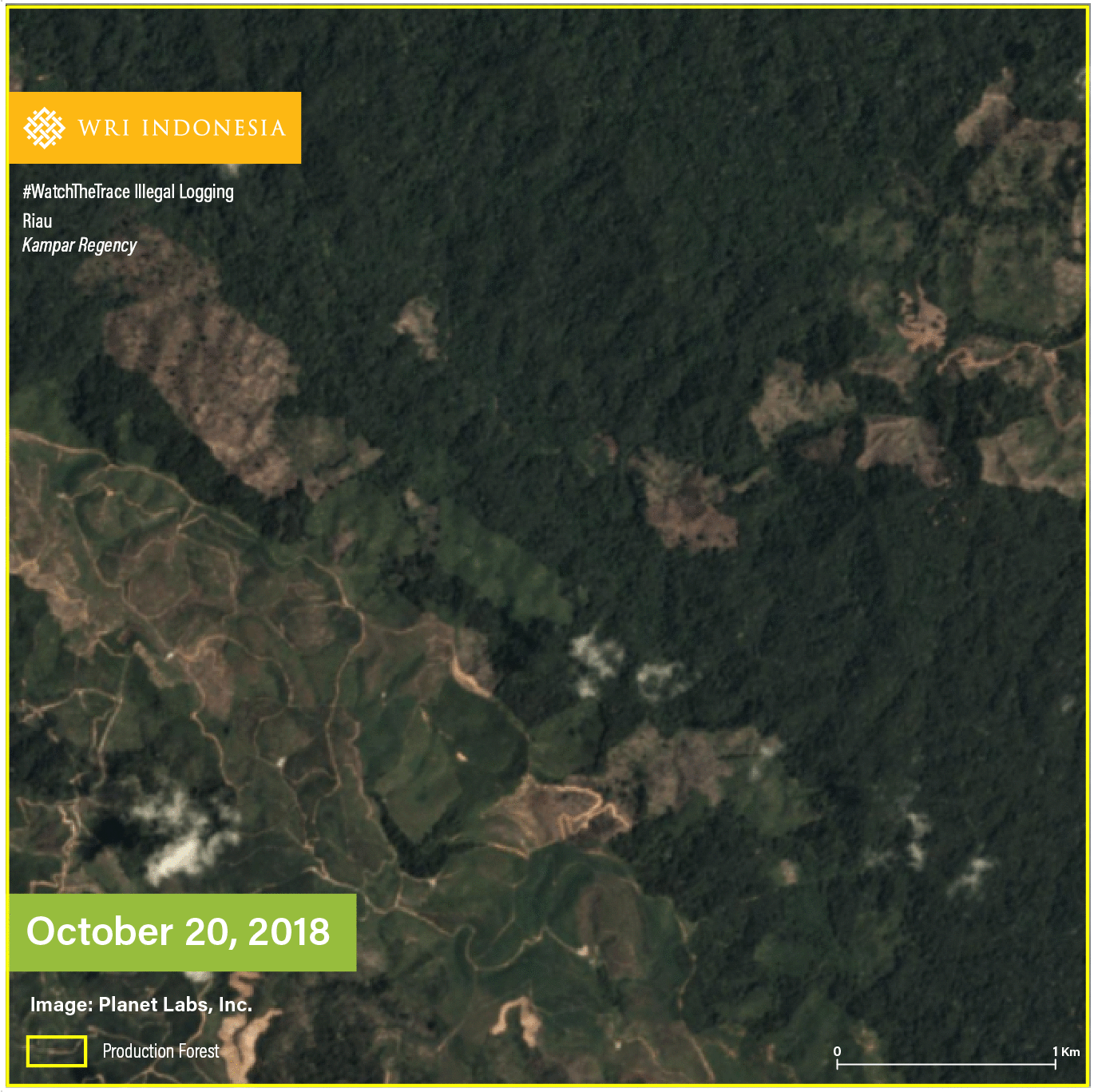
The first Indicated Area (#1) is located in the Kampar Kiri and XIII Koto Kampar Sub-districts, Kampar Regency, Riau Province. This area is an expansion of the second Indicated Area (#2) in Places to Watch: Part Three, in which illegal logging was indicated to occur within a 348-Ha area. In this edition (1 October - 31 December 2018), illegal logging has been indicated to occur within a 117-ha area. Compared to the forest loss within the period covered in the Third Part (1 July - 30 September 2018), the logging rate has declined from 58 Ha/month to 39 Ha/month. Indications of illegal logging in this limited production forest are scattered across several locations, with a scattered pattern. Satellite imagery shows patterns of logging activities but no visible signs of planting following land clearing.
This location needs special attention due to a number of reports of illegal logging in the Kampar Regency.
#2 Indications of Illegal Logging in a 95-Ha Area for Dryland Farming in Production and Protected Forest Areas, Buton and Muna Regency, Southeast Sulawesi

The second Indicated Area (#2) is located in the Mawangsaka Sub-district in Buton Regency and Bone Sub-district in Muna Regency, Southeast Sulawesi Province. A majority of indications of illegal logging within a 95-Ha area is found within the production forest area, while a small portion is found in the protected forest area. Satellite imagery shows small, sporadic patterns of logging activities that tend to mirror the path of the existing roads. Such pattern indicates that the forest area is being converted into a dryland farming area. This is confirmed by the presence of dryland farms around the area.
According to the study conducted by USAID on the vulnerability and risk of climate change in Southeast Sulawesi Province in 2018, local farmers still indulge in shifting cultivation practices that may affect the sustainability of forest areas in Southeast Sulawesi. One of the areas facing the highest risk of climate change is the Buton Regency due to the declining biomass, biodiversity and forest area. Spatial analysis shows that the Indicated Area is adjacent to farm lands located within an Area for Other Land Use (APL). The Mawangsaka Sub-district is also one of the primary farm-based areas, increasing the odds for expansion of farming activities in the APL into forest area.
#3 Indications of Illegal Logging in a 49-Ha Area for Land Clearing in Protected and Production Forest Areas, South Solok Regency, West Sumatera
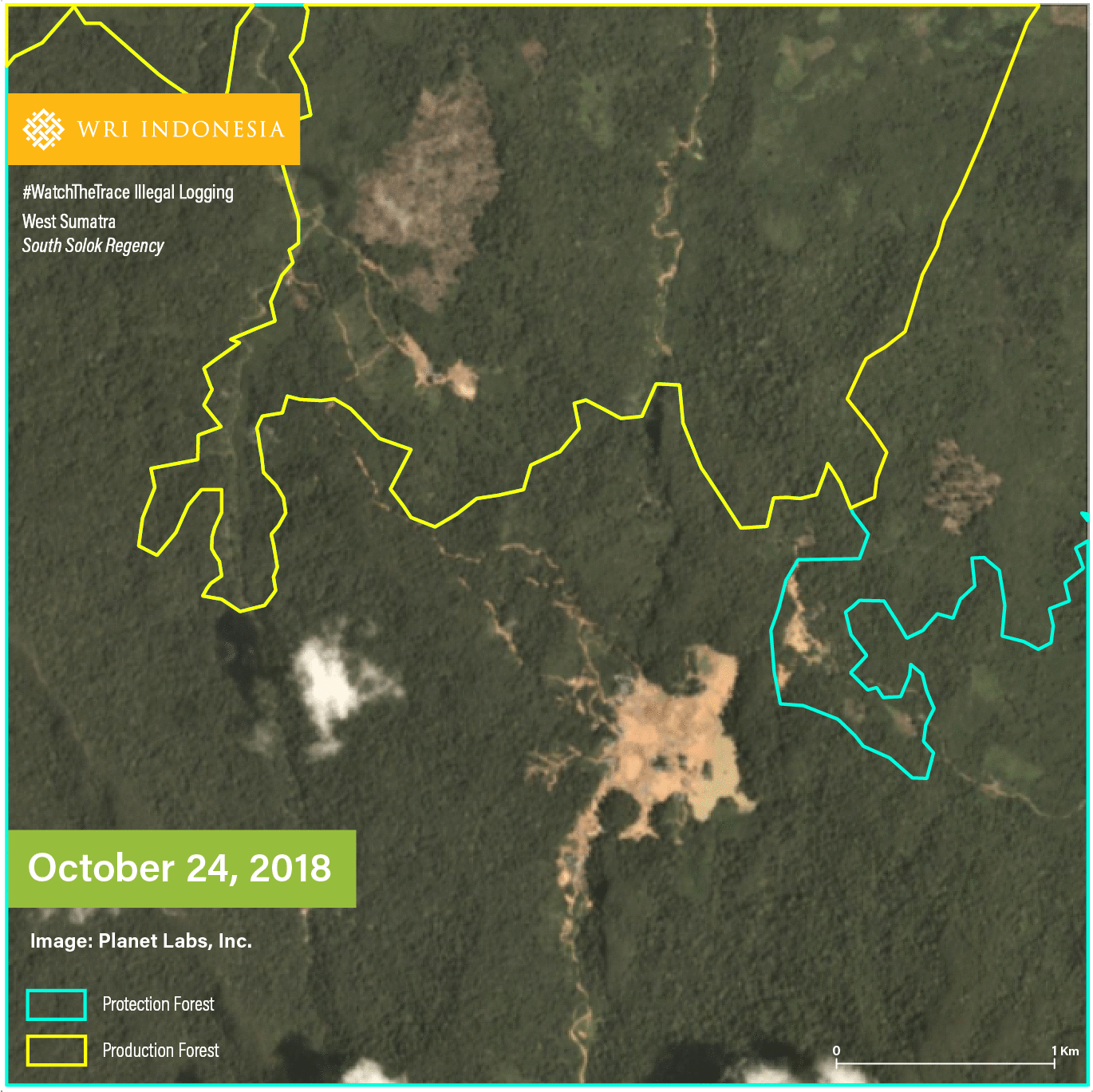
The third Indicated Area (#3) is located in the Sangir Batanghari Sub-district, South Solok Regency, West Sumatra Province. Illegal logging has been indicated within a 49-Ha area of protected and limited production forest. Satellite imagery shows patterns of clearing activities adjacent to the open mine area. The objective of such land clearing remains unclear as how the cleared land is used is yet to be seen.
In 2015, the Haluan Daily reported a total of 30,000 Ha of forest classified as critical land in South Solok Regency, 336.3 Ha of which is located in the Sangir Batanghari Sub-district. The formation of critical land usually occurs when land clearing and/or logging are done in shifting cultivation activities. In addition, the Chief of Criminal Investigation Unit of South Solok Regency once stated that the Sangir Batanghari Sub-district is extremely vulnerable to illegal logging as it is relatively unpopulated and easily accessible for log transporting.
#4 Indications of Illegal Logging in a 45-Ha Area for Land Clearing in Production Forest Area, Kolaka Regency, Southeast Sulawesi
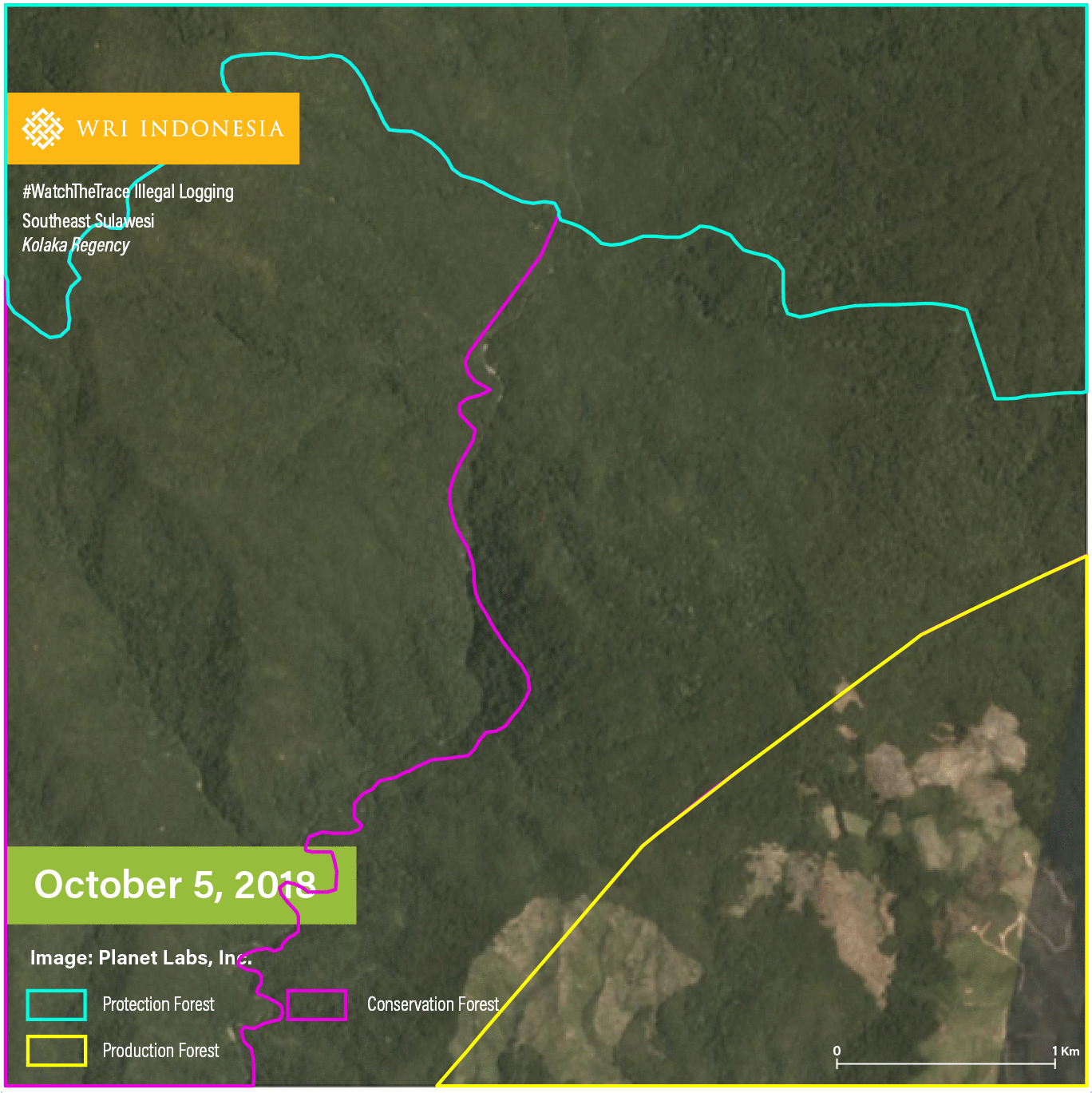
The fourth Indicated Area (#4) is located in the Latambaga and Kolaka Sub-districts, Kolaka Regency, Southeast Sulawesi Province. Covering an area of 45 Ha, illegal logging has been indicated within the production forest area directly adjacent to an area under a Social Forest Utilization Business Permit (IUPHKm). Based on satellite imagery observation, the indicated area is an extension of the land clearing in the IUPHKm area. The objective of such land clearing remains unclear as the land has not been utilized.
The land clearing might be caused by the lack of understanding among community members who are IUPHKm holders on the coverage of the permit – a common issue in the practices of IUPHKm. It is also possible that the logging in the forest area is associated with agricultural purposes.
According to the National Cacao Development Area Masterplan in Southeast Sulawesi 2016-2019, the Kolaka Regency has 3,506.99 Ha of cacao cultivation area within a forest area (Production, Converted Production, Limited Production, Protected Forest and Nature Reserve Forests). From the total cacao cultivation area within the non-APL area, around 770 Ha is located in the Latambaga Sub-district, while 510 Ha is located in the Kolaka Sub-district. Moreover, in January 2019, the Forestry Service of North Sulawesi Province stated that the Kolaka Regency is 1 of the 11 Regencies that experienced severe damages in 2018 due to logging, shifting cultivation and illegal mining exploration practices.
#5 Indications of Illegal Logging in a 43-Ha Area by Slash-and-Burn Land Clearing in Production Forest Area, Tanimbar Islands Regency, Maluku
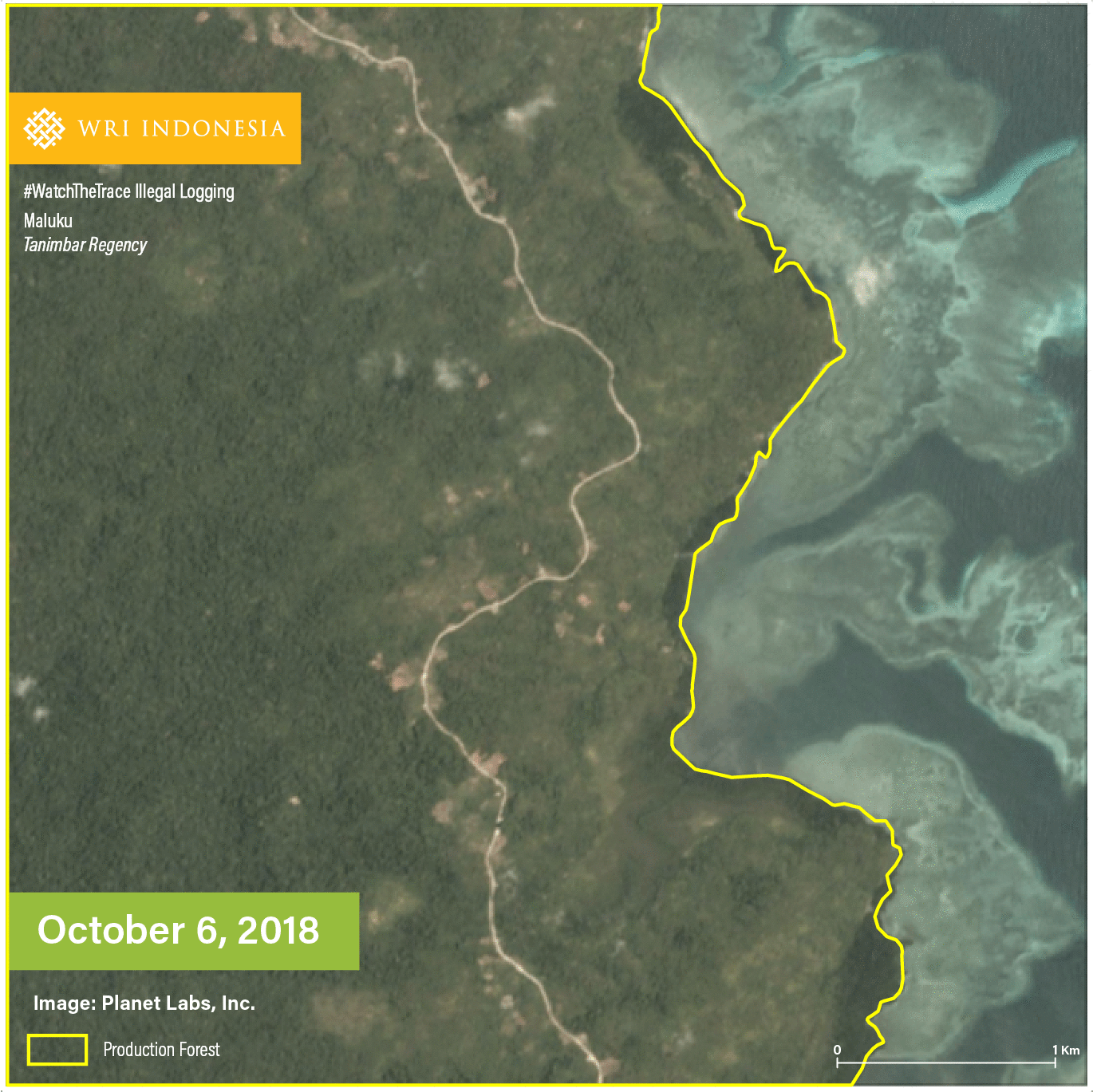
The fifth Indicated Area (#5) is located in the North Tanimbar District, Tanimbar Islands Regency, Maluku Province. The indicated logging of a 43-Ha area is located within a production forest area. Satellite imagery shows patterns of land clearing resembling a longitudinal line, near a network of roads. Another indicator is a blackish hue or burn scars in the cleared area, indicating the slash-and-burn clearing method.
Administratively, the Yamdena Island is located in the Tanimbar Islands Regency (previously West Southeast Maluku Regency), which is an area rich in timber products. Several social conflicts between the community and the natural production forest concession holder (HPH) regarding the utilization of forest in the area have been recorded. In 2012, the West Southeast Maluku (MTB) Regent stated that 10,000 Ha of critical land emerges every year due to illegal logging in MTB Regency.
The Next Step
The Five Places to Watch are identified based on indications analyzed using various instruments such as GLAD Alert, Forest Area Status Map and Land Cover/Utilization Map. However, this analysis can be used in determining the areas where monitoring for illegal logging must be prioritized. To that end, the following steps need to be taken immediately.
1. Field Verification and Action to Prevent Expansion of Illegal Logging in the Five Indicated Areas
All five Indicated Areas are not the first in their respective regions to suffer from illegal logging. Rather, these are extensions/expansions from ongoing activities. These Indicated Areas are at risk of continued logging expansion into the surrounding forests. In addition, all five Indicated Areas also require urgent environmental damage mitigation due to the massive scale of illegal logging, critical land, and climate change risk in their respective regencies and/or districts.
As such, authorities in charge of forest protection at the Indicated Areas must immediately conduct field verification and take action to prevent further illegal logging and illegal forest utilization. Community participation in providing information from the field may help in the verification process. If field verification is not conducted promptly, illegal logging will grow massively and the negative environmental impact will be inevitable. As the forest area that has been cleared and utilized for non-forestry activities grows larger, its management and restoration will become more challenging.
The first Indicated Area (#1) – Kampar Regency must be prioritized since the location has been featured in the Places to Watch: Part Three. This finding indicates continuity and the potential for expansion of activities indicated to be illegal logging. Furthermore, the Southeast Sulawesi Province must also be prioritized as two areas within the Province are featured as Indicated Areas, namely the second Indicated Area (#2) – Buton and Muna Regency and the fourth Indicated Area (#4) – Kolaka Regency.
2. Upon Verification, the Handling Process Must Take into Account the Socio-economic Background of Local Communities
Illegal logging across the five Indicated Areas is closely associated with small-scale economic activities. As such, upon verification, the handling process must take into account the socio-economic background of the local communities. The handling mechanism may include logical and fair conflict resolution, social forestry and law enforcement schemes. In addition, it is also necessary to trace the perpetrators back to the masterminds (intellectual players) who are reaping the ultimate benefits of illegal logging.
Footnote:
The local Places to Watch uses the method to identify areas in which illegal logging has been indicated used by the regular Places to Watch. Illegal logging is unauthorized logging within a forest area, authorized logging done in a way that deviates from the provisions of the permit as set out in Law No. 18 of 2013 on the Prevention and Eradication of Forest Damage.
These areas are identified based on high alert under GLAD warning.
Unlike in the regular Places to Watch, we use grids of 5x5 km and not 10x10 km, as 5x5 grids can better capture the causes of national forest losses. To indicate the areas of forest losses, GLAD warning data is multiplied by the forest cover (including only primary and secondary forests and excluding industrial cultivation forest class) based on the data of the MOEF. Then, each of the 5x5 km grid is overlaid with the forest area data to see indications of illegal logging within the forest area and corporate concessions such as HPH, HTI, forest area borrow-to-use permit, ecosystem restoration and social forestry to indicate authorized logging. In this stage, each grid is assigned a score that shows GLAD warning with an overlay of forest area data with no concession permit. Then, we choose the top 10 areas with the highest resolution for further validation. The Queen's Case Neighborhood method is then used to detect a large number of diagonally and perpendicularly adjacent cells on the top areas with GLAD warning by categorizing them into one cell group. Upon validation and identification of the cause for forest losses using images with the highest resolution, we pick the top 5 areas to be featured in this Places to Watch.
Forest area is an area determined by the government through the Ministry of Environment and Forestry as a permanent forest that may not be used for non-forestry activities. Such area has 3 primary functions, namely conservation (for the preservation of plant and animal biodiversity and their ecosystem), protection (for the protection of life sustaining systems such as water, disaster mitigation, etc.) and production (for forest product productions). Logging is basically prohibited in conservation and protected forests, while it is authorized in production forests as long as adequate reforestation efforts are carried out. Production forest areas are divided into 3 categories of limited production, permanent production and convertible production forest areas. These three categories of production forest areas have different criteria and scopes of utilization, which start from the most limited to the most extensive. Convertible production forest area can be widely utilized, as it is an area reserved for the development of transmigration, settlement, agriculture and plantation – which requires forest area discharging for non-forest development.
Data sources:
1. The GLAD warning from the University of Maryland via Global Forest Watch. The GLAD warning shows the weekly tree cover loss in a 30x30 meter area. Each pixel represents a 50% or more loss
2. Forest Area Data and Concession Permit from MOEF geoportal, accessed in October 2018
3. 2017 Land Closing Data from MOEF geoportal, accessed in April 2018